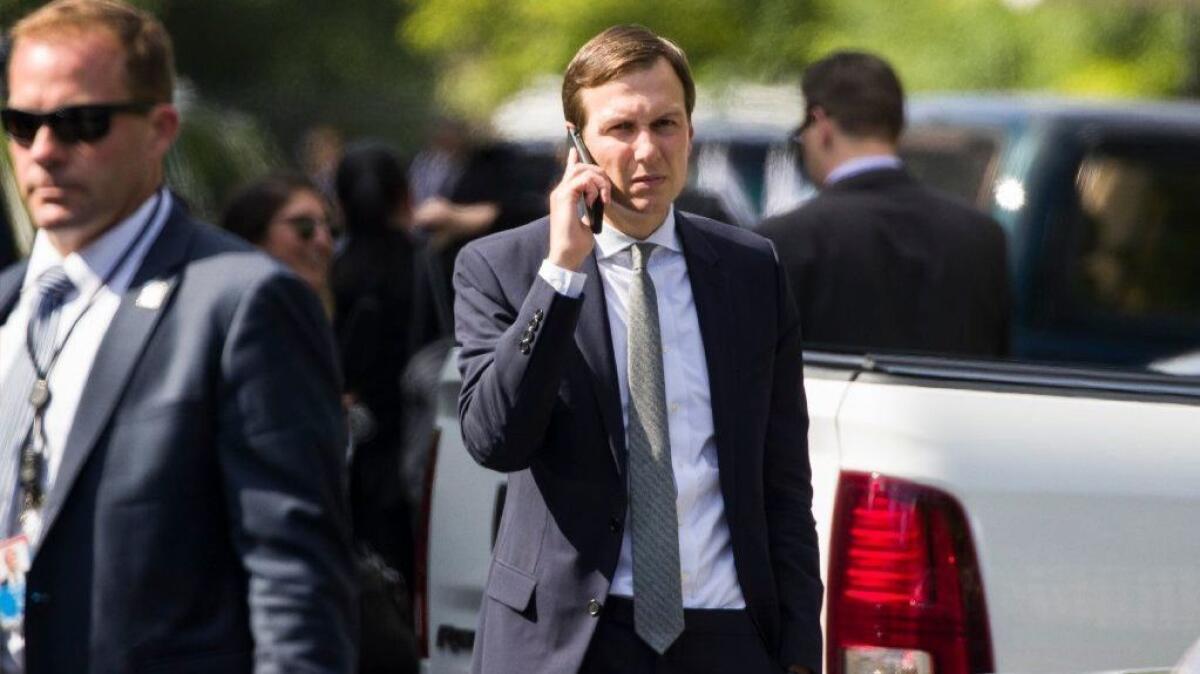The media colluded with the FBI? Now there’s some fake news

Everywhere President Trump and his allies look, they see collusion — against Trump.
The latest example is the flare-up stoked Thursday by Judicial Watch, a conservative legal group that’s been focused on (among other pursuits) the alleged Deep State conspiracy to bring down Trump.
Judicial Watch issued a news release headlined, “New Strzok-Page Emails Reveal FBI Efforts to Muddle Comey Testimony on Clinton Emails; FBI-Media Collusion.” The release cited newly obtained internal FBI emails showing how agents reacted to a number of inquiries from or stories by reporters for ProPublica, the New York Times and Politico. The big reveals? Reporters try to check their facts before publishing, and when a journalist comes up with proof that the FBI director got a key fact wrong in testimony to Congress, the FBI tries to correct the record with lawmakers.
That’s a scandal?
The right-of-center Washington Examiner did take one piece of the bait, publishing a story Thursday that declared, “A New York Times reporter fed information about Jared Kushner meeting with Russians to the FBI, newly released emails show.”
Here’s the section from the Judicial Watch press release that fueled the Examiner’s interest:
“In a March 24, 2017, email from New York Times reporter Michael Schmidt to FBI Assistant Director for Public Affairs Michael Kortan, Schmidt offers the FBI information about Ambassador Kislyak allegedly setting up a meeting between Jared Kushner and a Russian banker. Michael Schmidt asks no questions of Kortan, instead only offering information:
“Michael Schmidt emails Kortan: Mike: Wanted to flag you on something. Three of my colleagues are working on a story about the Russia investigation. They’re told that Jared Kushner is among the individuals who the F.B.I. is scrutinizing for their meetings with Russians. My colleagues were told that Ambassador Kislyak, after meeting Kushner and General Flynn in early December at Trump Tower, set up a meeting with Kushner and a Russian banker. Kushner ultimately met with the Russian banker. The banker worked for Alpha Bank. Thanks. Mike.”
For the benefit of the uninitiated, this is reporting. Journalists maintain relationships with the people they cover by keeping them in the loop. Reporting is a two-way street — journalists don’t just collect information, they share it too.
Schmidt didn’t have to ask Kortan any questions; implicit in his note was an invitation to comment. Three days later, the New York Times published a story about congressional investigators looking into Kushner’s meeting with a top Russian banker, and Schmidt was listed as a contributor.
The Examiner story also noted an internal FBI email on April 10 that “appears to be about getting a preview of an upcoming [New York] Times report” — borrowing almost verbatim from the Judicial Watch news release. Titled “NYT last shot,” the email (sent by an unidentified FBI press officer) says, “The editing is nearing completion and we have one last shot to hear what the end result is. Do you have time later today or tomorrow that is convenient for a listening session? Likely by phone in Mike’s office.”
Again, for the uninitiated, this is called fact-checking. And by the way, just because a reporter reaches out to an agency the way the New York Times’ staffers did, that’s not a telltale sign of a warm and fuzzy relationship. It’s just due diligence, especially when you’re working on a story that involves anonymous sources or disputed information. Some (but certainly not all) of us also like to let the people we cover know when we’re about to write about them. That’s not because we’re nice people; it’s because we’re looking for feedback.
Naturally, Trump offered a different take.
I’m not going to defend the New York Times’ reporting on the Kushner story — it’s quite capable of defending itself. But Judicial Watch’s news release reveals that the group simply does not understand how journalists do their work. And worse, it seems predicated on the notion that we in the news media would produce a better product if we talked to fewer people and didn’t try to confirm our findings before going public.
The Examiner rewrote its story a bit after this article initially was published Friday, with this note at the top: “CORRECTION: The Washington Examiner has updated this story to: remove the characterization that the New York Times reporter ‘fed information’ to the FBI; clarify when the email was written and when and to whom it was forwarded; include a post-publication response from the New York Times; and reflect the fact that four days after the email was sent the New York Times published a report headlined, “Senate Committee to Question Jared Kushner Over Meetings With Russians.” We regret that this story did not adhere to the Washington Examiner’s normal standards and procedures.” The story goes on to make several of the points I made in this article about standard journalistic practices, which someone at the Examiner apparently recognized after its original piece was published.
Enter the Fray: First takes on the news of the minute »
More to Read
A cure for the common opinion
Get thought-provoking perspectives with our weekly newsletter.
You may occasionally receive promotional content from the Los Angeles Times.






